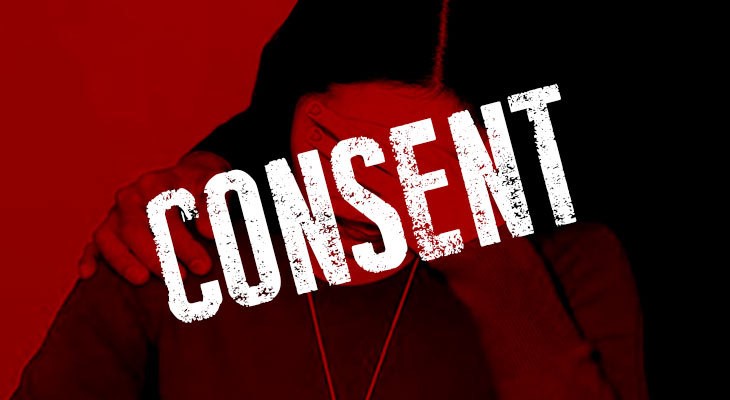BLOG
Common Sexual Offence Charges in Alberta
Cory Wilson is a sexual assault lawyer, serving Calgary, Okotoks, Airdrie, Canmore, Strathmore, Didsbury, Cochrane, Lethbridge and Medicine Hat.

Sexual offences are incredibly complex and encompass many different charges under the Criminal Code. They are some of the most difficult offences to defend and require a lawyer with significant experience to help you navigate the criminal justice system.
Sexual Assault
Sexual assault is an unwanted touching of a sexual nature. It is an act in which a person sexually touches another person without their consent. The offence requires that there was an assault and it was of a sexual nature or purpose. The assault element requires intentional touching. The sexual nature or purpose element is defined by the act and the surrounding circumstances. Circumstances include the part of the body touched, nature of the contact, the situation in which it occurred and words spoken or gestures made.
Sexual Interference
Sexual interference involves a person who for a sexual purpose, touches, directly or indirectly, a person under the age of 16. The offence requires proof that the touching was for a sexual purpose which is defined in the circumstances of the situation including the part of the body touched, nature of the contact, the situation in which it occurred and words spoken or gestures made.
Invitation to Sexual Touching
Invitation to sexual touching involves a person who persuades a person under the age of 16 to touch directly or indirectly the body of any person, including themselves, for a sexual purpose. Unlike sexual assault which requires an actual assault, this is a crime of communication.
Sexual Exploitation
The age of consent in Canada is 16. However, if a person is under the age of 18, it is an offence to engage in sexual activity if:
- the person is in a position of trust or authority
- the person is in a position of dependency
- the relationship is exploitive
Often, these charges stem from inappropriate sexual relationships involving caregivers, teachers and coaches on those under the age of 18.
Child Pornography
Child pornography is broadly defined but includes video or photographic representations of a person under 18 engaged in sexual activity. It is an offence to make, distribute, possess or access such representations.
What are defences to a sexual assault charge?
Like any other criminal offence, the prosecutor must prove certain elements in order to establish guilt beyond a reasonable doubt. Sexual assault is established by the proof of: intentional touching, the sexual nature of the contact and the absence of consent.

Defences to sexual assault depend on the circumstances of each case. Depending on the allegations, three potential defences are:
- The sexual act did not occur;
- The sexual act occurred but the complainant consented;
- The sexual act occurred, the complainant did not consent but the accused had an honest but mistaken belief in consent.
The sexual act did not occur
Sexual assault has been described as the most under-reported and most over-reported offence. This means that many victims of sexual assault never report the offence to police for a multitude of reasons. It is also over-reported in that complainants either make a false report of sexual assault or as is often the case with very young children, a complainant has come to believe the sexual assault occurred when it in fact did not. Unless an accused has a plane ticket showing they were out of the country on the exact day of the alleged offence, it is very likely that the accused will have to testify in his or her own defence that the act was not committed.
The sexual act occurred but the complainant consented
In some circumstances, consent existed at the time of the sexual act but then for various reasons, the complainant falsely claims that he or she did not actually consent. This is a different defence to mistaken belief in consent because the defence is based almost entirely on attacking the credibility of the complainant.
Mistaken belief in consent
The defence of mistaken belief in consent is available where the complaint denied there was consent or there was an incapacity of consent which was interpreted by the accused as consent. The accused must also show that there was evidence of ambiguity or equivocality showing the possibility of mistaken belief as long as the accused was not being willfully blind or reckless as to consent.
In order to make out honest but mistaken belief in consent, the defence requires:
- evidence that the accused believed the complainant was consenting;
- evidence that the complainant in fact refused consent, did not consent, or was incapable of consenting; and
- evidence of a state of ambiguity which explains how lack of consent could have been honestly understood by the defendant as consent, assuming he was not willfully blind or reckless to whether the complainant was consenting, that is, assuming that he paid appropriate attention to the need for consent and to whether she was consenting or not.
To demonstrate an honest but mistaken belief in consent, the accused must show that reasonable steps to ascertain consent were taken and that the complainant communicated consent to engage in the sexual act. What constitutes reasonable steps depends on the totality of the circumstances and is evaluated on a case by case basis.
In order to determine mistaken belief in consent, the judge or jury must determine the circumstances known to the accused at the time of the sexual act. Then, the judge or jury must determine whether a reasonable person aware of the same circumstances would have taken further steps before proceeding with the sexual act.
Cory Wilson is a criminal defence lawyer based in Calgary. If you have been charged with a criminal offence or are a suspect in a criminal investigation, call today for a free, no obligation consultation.